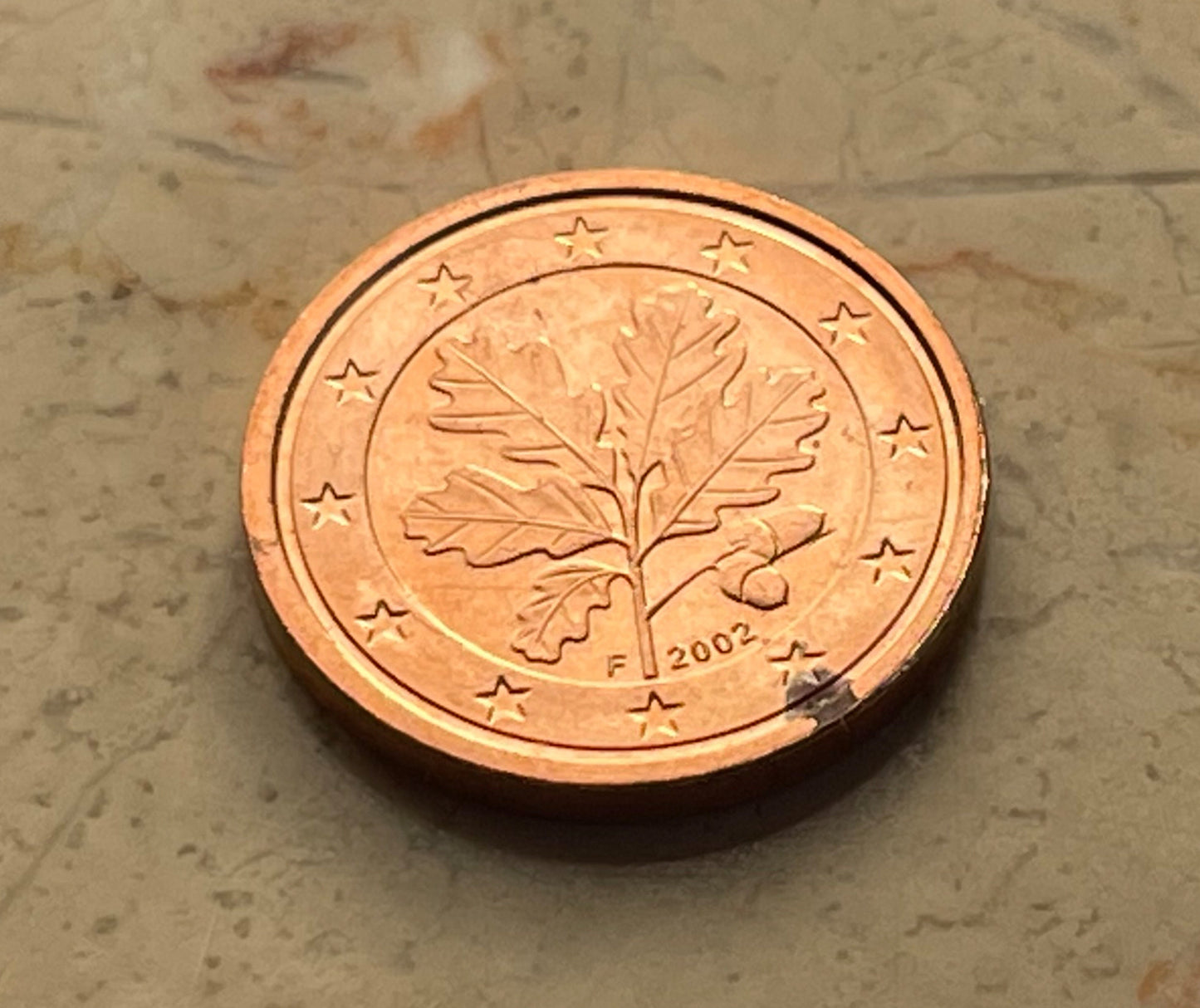elemintalshop
Oak Twig 1 Euro Cent German Authentic Coin Money for Jewelry and Craft Making
Oak Twig 1 Euro Cent German Authentic Coin Money for Jewelry and Craft Making
Couldn't load pickup availability
Oak Twig 1 Euro Cent German Authentic Coin Charm for Jewelry and Craft Making
The front of the coin bears an oak twig, symbolizing stability, surrounded with the twelve stars of Europe.
The back of the coin bears a globe, next to the face value, showing Europe in relation to Africa and Asia.
Features
Issuer Federal Republic of Germany
Period Federal Republic (1949-date)
Type Standard circulation coin
Years 2002-2022
Value 1 Euro Cent
0.01 EUR = USD 0.011
Currency Euro (2002-date)
Composition Copper plated steel
Weight 2.3 g
Diameter 16.25 mm
Thickness 1.67 mm
Shape Round
Technique Milled
Orientation Medal alignment ↑↑
Number N# 105
References KM# 207, J# 482, Schön# 206
Wikipedia:
The oak is a common symbol of strength and endurance and has been chosen as the national tree of many countries. ... Already an ancient Germanic symbol (in the form of the Donar Oak, for instance), certainly since the early nineteenth century, it stands for the nation of Germany and oak branches are thus displayed on some German coins, both of the former Deutsche Mark and the current euro currency. In 2004 the Arbor Day Foundation held a vote for the official National Tree of the United States of America. In November 2004, the United States Congress passed legislation designating the oak as America's National Tree.
Other countries have also designated the oak as their national tree including Bulgaria, Cyprus (golden oak), Estonia, France, Germany, Moldova, Jordan, Latvia, Lithuania, Poland, Romania, Serbia, and Wales.
The prehistoric Indo-European tribes worshiped the oak and connected it with a thunder or lightning god, and this tradition descended to many classical cultures.
In Greek mythology, the oak is the tree sacred to Zeus, king of the gods. In Zeus's oracle in Dodona, Epirus, the sacred oak was the centerpiece of the precinct, and the priests would divine the pronouncements of the god by interpreting the rustling of the oak's leaves.
In Celtic polytheism, the name of the oak tree was part of the Proto-Celtic word for 'druid': *derwo-weyd- > *druwid-; however, Proto-Celtic *derwo- (and *dru-) can also be adjectives for 'strong' and 'firm', so Ranko Matasovic interprets that *druwid- may mean 'strong knowledge'. As in other Indo-European faiths, Taranis, being a thunder god, was associated with the oak tree.[61] "Tree" and drus may also be cognate with "Druid," the Celtic priest to whom the oak was sacred. There has even been a study that shows that oaks are more likely to be struck by lightning than any other tree of the same height.
In Norse mythology, the oak was sacred to the thunder god, Thor. Thor's Oak was a sacred tree of the Germanic Chatti tribe.
In Baltic and Slavic mythology, the oak was the sacred tree of Latvian god Pērkons, Lithuanian Perkūnas, Prussian Perkūns and Slavic Perun, the god of thunder and one of the most important deities.
The oak also appears in the Hebrew tradition. In the Bible, the oak tree at Shechem is the site where Jacob buries the foreign gods of his people (Gen. 35:4). Also, Joshua erects a stone under an oak tree as the first covenant of the Lord (Josh. 24.25–7). In Isaiah 61, the prophet refers to the Israelites as "Oaks of Righteousness". Absalom's long hair (2 Samuel 18:9) gets caught in an oak tree, and allows Joab to kill him.
Vereration of the oak survives in Serbian Orthodox Church tradition. Christmas celebrations include the badnjak, a branch taken from a young and straight oak ceremonially felled early on Christmas Eve morning, similar to a yule log. In recent times, only the branches are collected, brought home, and ceremoniously thrown into a stove or church bonfire. In another tradition, a zapis (lit. "inscription") is an old, isolated oak on a hilltop or promontory, often inscribed with a cross by a parish priest. Reverence for zapisi probably originated in pre-Christian times, and they long remained places of public gathering and even of Christian worship where churches were not available. For example, in 1815, at a zapis assembly in Takovo, knez Miloš Obrenović declared the start of the Second Serbian Uprising. Even in modern times, cutting down zapis oaks can result in public outcry, even for projects like road building.
In some traditions of Wicca, the Oak King is one of the two faces of the Sun God. He is born on Yule and rules from Ostara to Mabon.
Share







Very lovely oak leaf coin. Just what I was looking for.
5 stars review from Niki
5 stars review from Wendy
coin is just as in photo, love the acorn and leaf motif






